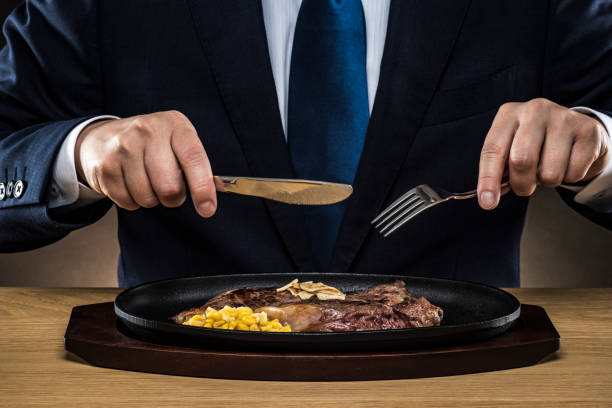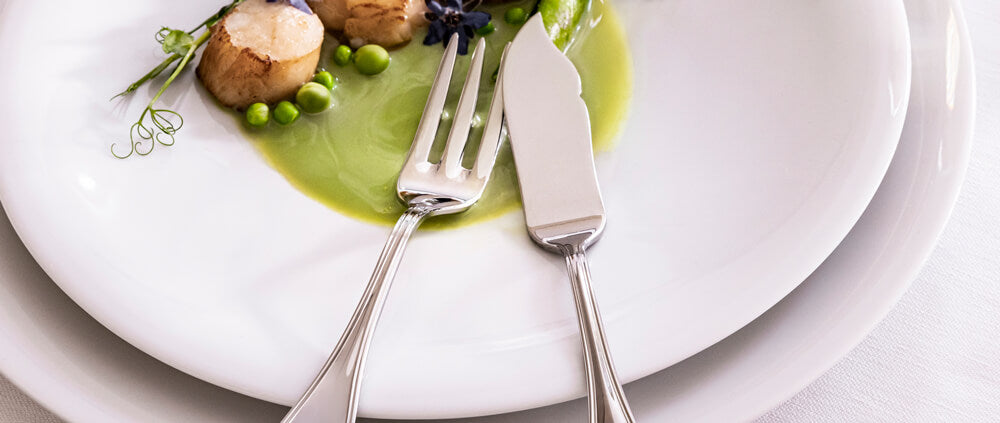When it comes to business dinners, mastering knife etiquette can significantly enhance your professional image. Whether you're a seasoned kitchen professional or new to the culinary world, understanding the subtleties of knife etiquette in business dinners is crucial. The way you handle your knife can speak volumes about your professionalism and respect for dining traditions.
Business dinners are more than just a meal; they are an opportunity to build relationships, close deals, and create lasting impressions. As a kitchen professional, your expertise in knife handling can be a talking point, showcasing your attention to detail and respect for culinary arts. Let's delve into the essential aspects of knife etiquette that every professional should know.

The Importance of Proper Knife Etiquette
Understanding why knife etiquette is essential can set the tone for a successful business dinner. It's not just about avoiding faux pas; it's about demonstrating respect for your dining companions and the culinary arts. Proper knife etiquette reflects your awareness of cultural norms and your ability to adapt to different dining environments.
At a business dinner, the way you use your knife can influence how others perceive you. Are you confident and poised, or do you struggle with basic table manners? Mastering knife etiquette shows that you are polished and professional, qualities highly valued in the business world.
Basic Knife Handling Techniques
For kitchen professionals, knife handling is second nature, but it's crucial to adapt those skills to a dining context. Start by holding the knife correctly: grip the handle firmly with your dominant hand, and ensure your index finger is not resting on the blade. This grip provides control and precision, allowing you to cut your food gracefully.
When cutting, use a gentle sawing motion rather than forcing the knife through the food. This technique not only prevents food from flying off your plate but also demonstrates finesse. Remember, the knife should never scrape against the plate, as this creates an unpleasant sound and can damage the cutlery.
Knife Placement: Signaling Your Intent
Understanding knife placement signals during a meal is an essential part of knife etiquette. When taking a break, place your knife and fork in an inverted V position on your plate. This signals to the waitstaff that you are not finished. When you have completed your meal, place the knife and fork parallel to each other diagonally across the plate, handles at the four o'clock position.
These subtle cues are universally recognized and ensure seamless service during your business dinner. Mastering these signals reflects your understanding of dining codes and enhances your dining experience.
Cultural Variations in Knife Etiquette
Different cultures have unique dining customs, and being aware of these can enhance your business interactions. In European settings, for example, it is customary to keep the knife in your right hand and the fork in your left throughout the meal. In contrast, American dining etiquette often involves switching the fork to the right hand after cutting.
Understanding these cultural nuances can prevent misunderstandings and show your respect for international dining traditions. As a kitchen professional, this knowledge can also be an asset when creating menus or serving clients from diverse backgrounds.
Advanced Knife Techniques for Professionals
For kitchen professionals, showcasing advanced knife techniques can be an opportunity to impress your dining companions. Techniques such as julienning or brunoising can be subtly referenced in conversation, demonstrating your culinary expertise. Additionally, understanding the different types of knives and their uses can be a topic of discussion, showcasing your depth of knowledge.
When discussing knife skills, it's essential to remain humble and approachable. Sharing tips or offering insights can create a collaborative atmosphere, fostering positive relationships with your dining companions.
Resources for Further Learning
To deepen your understanding of knife etiquette, consider exploring resources such as Montiboli's guide on cutlery language or Kent State's dining etiquette guide. These resources offer valuable insights into the nuances of dining etiquette and can enhance your professional image.
Additionally, the WikiHow guide on using a fork and knife provides practical tips for mastering basic dining skills. For those interested in the cultural aspects of knife etiquette, The Guardian's article on table manners offers an engaging read.
Conclusion: Elevate Your Dining Experience
In conclusion, mastering knife etiquette in business dinners is an invaluable skill for kitchen professionals. It not only enhances your dining experience but also reflects your professionalism and respect for culinary traditions. By understanding the nuances of knife handling, placement, and cultural variations, you can create a positive impression and build lasting relationships during business dinners.
Remember, dining is an art form, and your ability to navigate it with grace and confidence can set you apart in the professional world. Embrace the opportunity to showcase your skills, and you'll find that knife etiquette is a valuable tool in your professional toolkit.

FAQs
What is the correct way to hold a knife?
Hold the knife with a firm grip using your dominant hand, ensuring your index finger is not resting on the blade. This provides control and precision, allowing for graceful cutting.
How do I signal that I've finished my meal?
Place your knife and fork parallel to each other diagonally across the plate, handles at the four o'clock position. This signals to the waitstaff that you have completed your meal.
Are there cultural differences in knife etiquette?
Yes, different cultures have unique dining customs. In Europe, it's customary to keep the knife in your right hand, while in the U.S., diners often switch the fork to the right hand after cutting.
This article contains affiliate links. We may earn a commission at no extra cost to you.


























